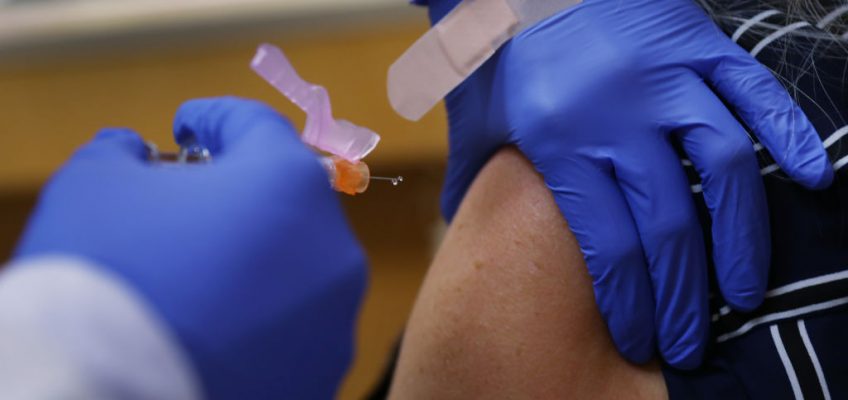You’re in an elevator with someone sneezing and dripping and hacking and coughing. You back into a far corner, horror on your face and revulsion in your gut.
That’s normal!
As cold, flu and COVID season sets in, we chatted with Chapman University’s Patricia Lopes, an assistant professor of biology, who studies how sick individuals impact those around them. It’s not as clear-cut as it may seem. Turns out that simply observing a sick individual triggers not only that familiar behavioral response — get away! — but a complex biological response as well.
“The really interesting aspect is, it also changes your physiology,” she said.
Her own experiments and reviews of scientific studies find that, when healthy animals interact with animals showing symptoms of illness, molecular pathways related to immune responses activate. Egg composition changes. And all without those animals actually being sick themselves, as if their bodies are prepping for a fight.
Consider one of the experiments that galvanized Lopes’ curiosity: People watched a slideshow. Their blood composition was measured before and after. After folks saw images of sickness — coughing, sneezing, blisters on the skin, etc. — their blood showed an increased level of molecules that could help respond to infection.
The slideshow was repeated with threatening images of a different sort — such as guns pointed at the viewer — and the blood did not show elevated levels of infection-fighting molecules after viewing.
“So I became really interested and I started reading and trying to understand how generalized this is,” Lopes said. “Is it just in humans? Throughout animal kingdom? I did find that, for a lot of species, from fruit flies to birds to other mammals, we see examples of this.”
When female mice were exposed to sick mice during pregnancy, their babies rebounded from the same sickness more quickly down the line.
But the physiological response to nearby sickness might not always be a positive one. Female Japanese quail housed with sickly-looking animals laid eggs containing more stress hormones, which could have an impact on their offspring.
Lopes has a three-year, $600,000 grant from the National Science Foundation to probe this under-studied phenomenon.
Canaries at a pet bird exhibition in 2017. (KHALIL MAZRAAWI/AFP via Getty Images)
“The objective for this proposal is to study how exposure to disease risk affects the physiology and reproductive investment of uninfected animals, as well as their own responses upon infection,” her abstract for the NSF says. “To accomplish this goal, a host-parasite system (canary – Mycoplasma gallisepticum) will be used, where responses to disease risk have already been demonstrated to occur.
“To quantify how observation of infected symptomatic birds … relative to observation of healthy birds affects animals, the project will 1) use a transcriptomic approach (studying all RNA molecules) to address how multiple organs respond to disease risk over time, 2) evaluate whether and how disease risk information modifies the damage and the time course imposed by a subsequent infection, and 3) quantify changes in reproductive behavior and investment imposed by the presence of disease risk.”
Lopes hopes to have some results starting next summer.
“The interesting thing to me is that it really shows the mind-body connection,” Lopes said. “You’re receiving this signal — watching, smelling, hearing sickness symptoms — and then your immune system changes. This nervous system changing the immune system is a very interesting avenue of research — that your nervous system has this power to change your immune cells and immune response.”
It’s not at all clear how long these responses last, so folks shouldn’t count on them to ward off illness. Vaccination is the way to go as we enter peak cold, flu and COVID season, she said.
This makes me recall with agonizing clarity that episode when my eldest was barely 2, feverish, coughing, runny nose, the whole shebang. I was changing her diaper, standing her up on the dressing table to pull up her jammy pants, when she Exorcist-vomited into my face.
I had managed to escape sickness until then, but was certain my luck had finally run out. Miraculously, though, I didn’t get sick. Maybe this helps explain why.
Lopes says her research aims to unveil the hidden ripple effects of infections. When one individual falls ill, it’s not just their problem — it’s a complex story that can impact the health and behavior of many others.
Related Articles
Quick genetic test offers hope for sick, undiagnosed kids. But few insurers offer to pay
Abortion coverage is limited or unavailable at a quarter of large workplaces
Health care ‘game-changer’? Feds boost care for homeless Americans
Biden launches 31 technology hubs nationally, including St. Paul
You don’t lose if you (hit) snooze, study says


Leave a Reply